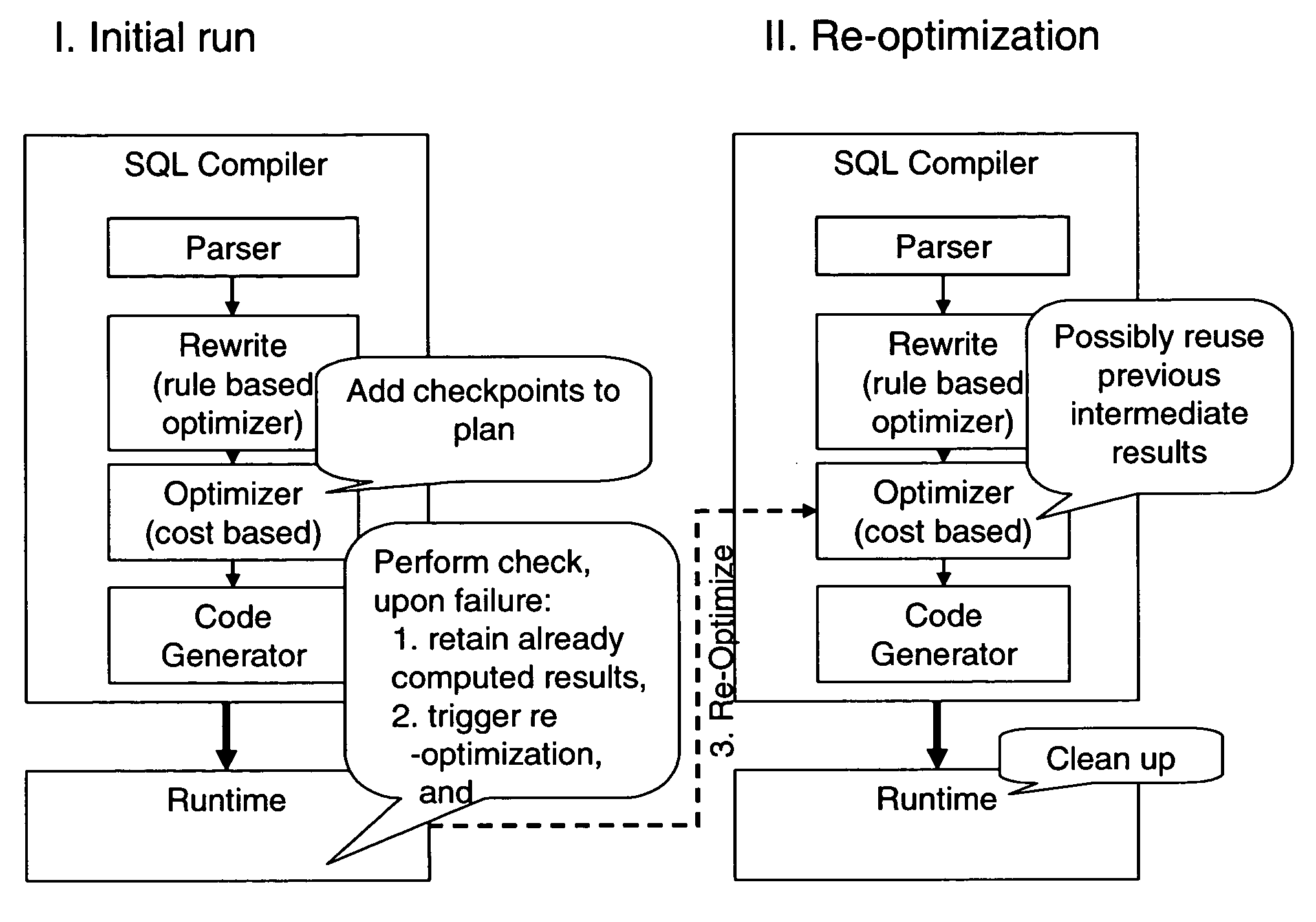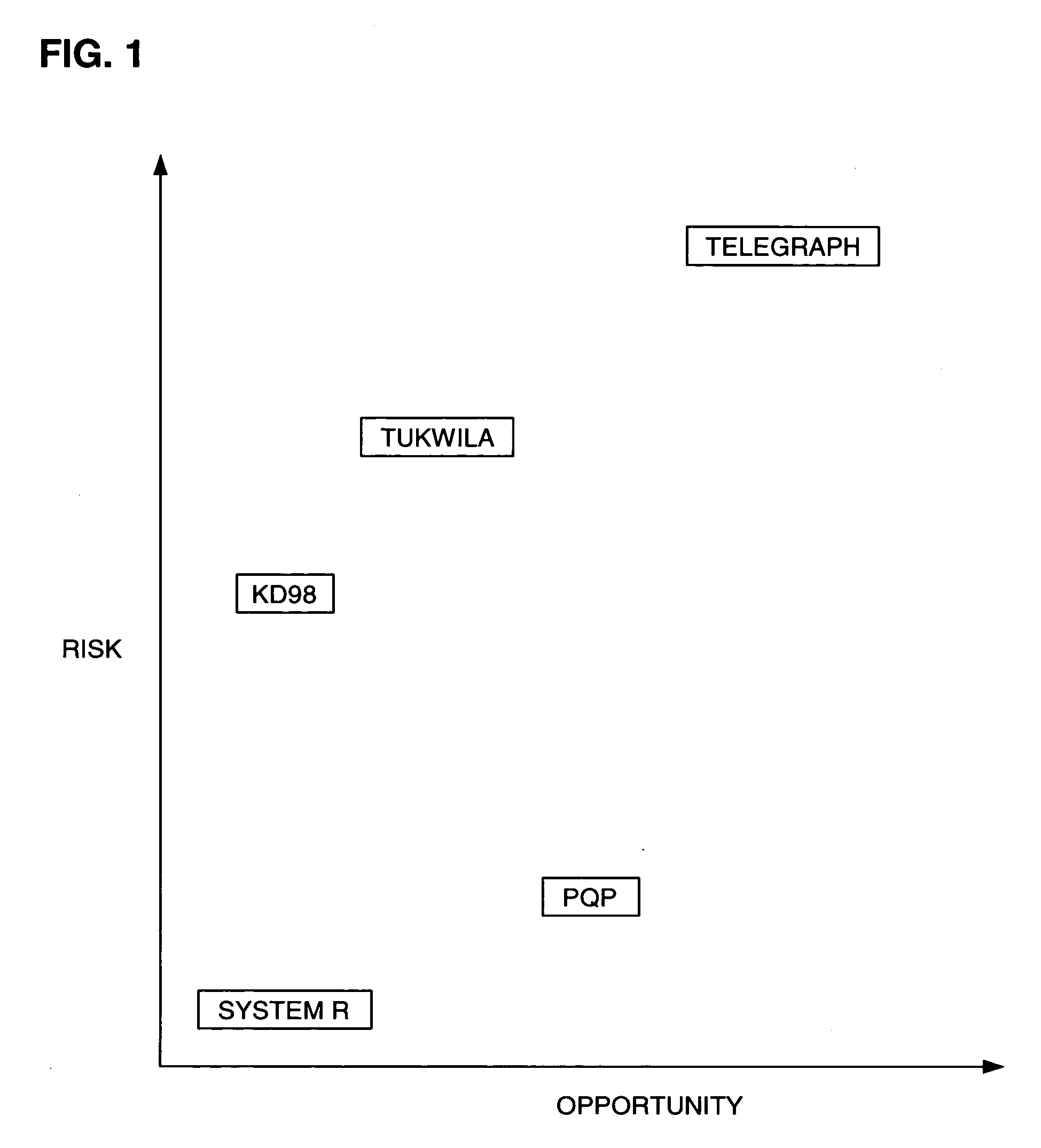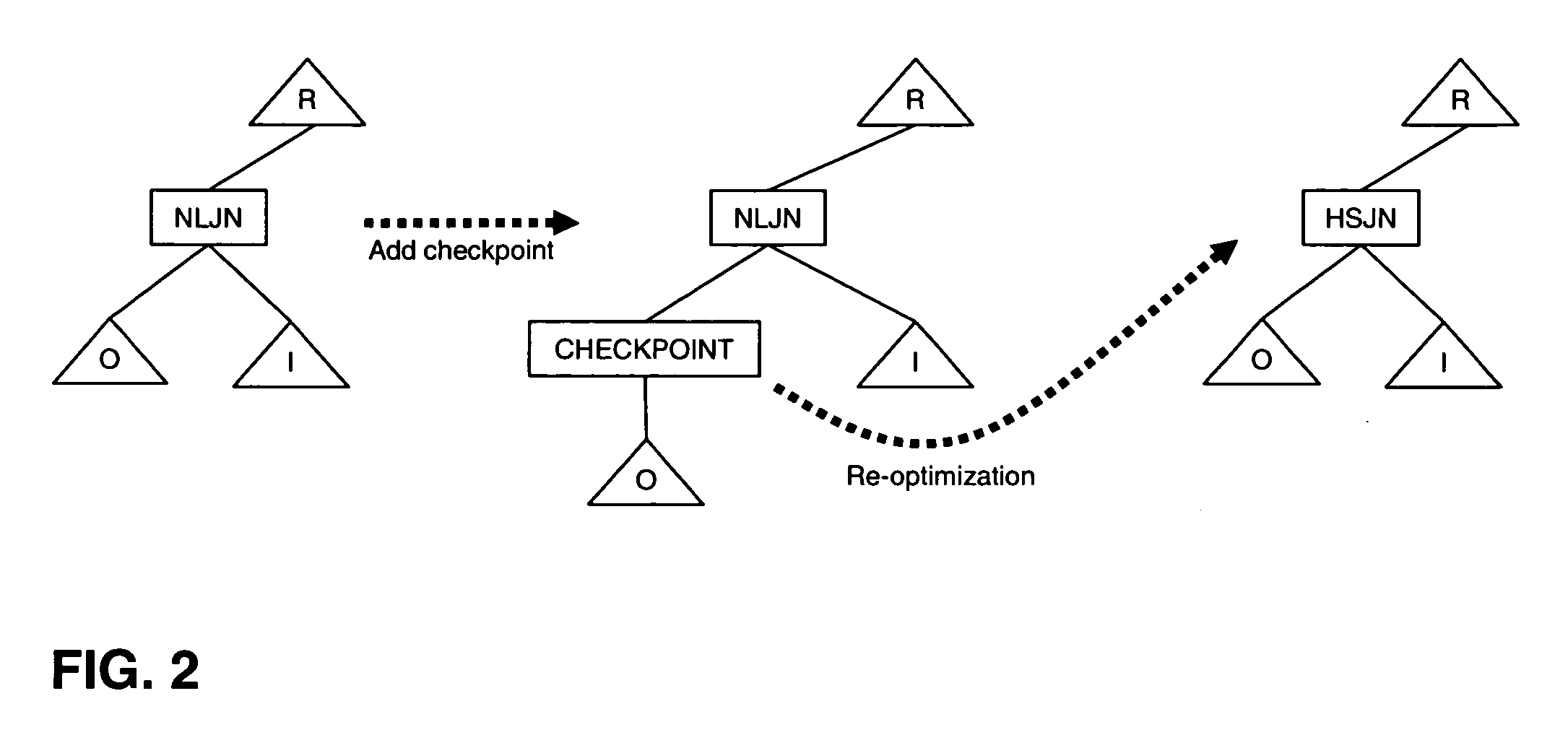System, method, and computer program product for progressive query processing
a technology of database management system and progressive optimization, applied in the field of query optimization in database management system, can solve the problems of large re-optimization cost, unavailability of a progressively optimized query, and explosion of achieve the effect of reducing the number of plans that need to be generated and generating a large number of plans
- Summary
- Abstract
- Description
- Claims
- Application Information
AI Technical Summary
Benefits of technology
Problems solved by technology
Method used
Image
Examples
first embodiment
[0054]the invention, termed lazy checking (LC), piggybacks on materialization points, i.e., points in a QEP where an entire intermediate result is materialized before proceeding with further operators of the plan. Examples for such materialization points in DB2 are:
[0055]a) the SORT operator (which sorts its input, e.g. for a sort-merge join or group-by),
[0056]b) the TEMP operator (which creates a temporary table, e.g. for caching subquery results), and
[0057]c) the build side of the hash join operator.
[0058]Placing a checkpoint above a materialization point means that the cardinality of the materialization point will be checked exactly once, that is, after the materialization has been completed. Materialization points are ideal checkpoints, for two reasons. First, the checkpoints need no compensation because no results could have been output before re-optimization. Second, the materialization creates intermediate results, which can be reused by the re-optimized query.
[0059]Lazy chec...
second embodiment
[0060]Although materialization points allow very efficient re-optimization, they may not occur frequently. If one wants to check above a QEP node and there is no materialization, an alternative approach is to explicitly add a CHECK-MATERIALIZATION pair that first materializes the result and blocks any pipelining. Upon complete construction of the materialized intermediate result, the CHECK condition is evaluated. This second embodiment is termed Lazy Checks with Eager Materialization (LCEMs).
[0061]LCEMs cannot be added recklessly because of the extra overhead of materialization. Instead, the following heuristic can be used. Among the various join operators in the plan, merge joins have materialization on both inputs, and hash joins have materialization on the build side. So it is mainly the various varieties of NLJN that may have no materialized inputs and therefore need LCEMs. Therefore the heuristic is to add LCEMs on the outer side of every NLJN (unless the outer stream already h...
third embodiment
[0065]the present invention is an Eager Check without Compensation (ECWC), which is a checkpoint that has a materialization point as its ancestor, i.e., which is executed later, and therefore needs no compensation. The right part of FIG. 4 shows how a checkpoint is pushed down below a materialization point, breaking the sub-plan P into the two sub-plans P1 and P2 and performing eager checking on P1.
[0066]More general eager checks take place in pipelined (sub)plans, and thus may require compensation in order to avoid false duplicates. They are of two kinds:
Eager Check with Buffering
PUM
 Login to View More
Login to View More Abstract
Description
Claims
Application Information
 Login to View More
Login to View More - R&D
- Intellectual Property
- Life Sciences
- Materials
- Tech Scout
- Unparalleled Data Quality
- Higher Quality Content
- 60% Fewer Hallucinations
Browse by: Latest US Patents, China's latest patents, Technical Efficacy Thesaurus, Application Domain, Technology Topic, Popular Technical Reports.
© 2025 PatSnap. All rights reserved.Legal|Privacy policy|Modern Slavery Act Transparency Statement|Sitemap|About US| Contact US: help@patsnap.com



